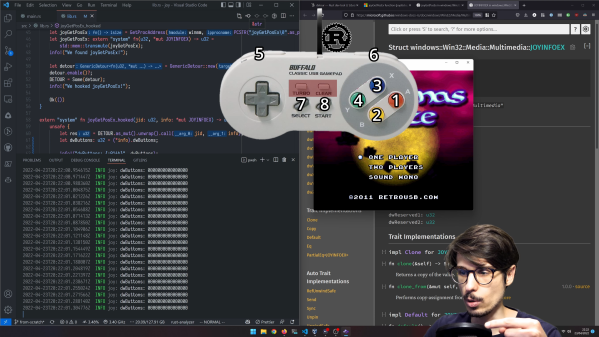Ever been frustrated that a software package was missing a feature you want? In the best-case scenario, the software would be open source and you could just tweak the code and rebuild. But in many cases, the software is closed-source. In the case of [Faster than lime], he found a SNES emulator (Snes9X) that didn’t support controllers to showcase the technique. So with a little bit of Rust, he wrote some code that could be injected into the emulator via DLL injection.
It’s a fantastic tutorial that shows the technique. He starts by creating a Rust project that uses the DLL-Syringe crate (the rust version of dependency management). This crate does much of the heavy lifting involved with injecting a DLL into a target process. The rest of the journey is an excellent process of going through the Windows documentation and implementing the features. The DLL just reads the controller and then sends the right input to the program. In the end, [Faster than lime] has a great injected DLL and we have a wonderful time learning about Rust and debugging in an injection environment!
It’s been a while since we last covered DLL injection, and it’s nice to see how the process has evolved. Video after the break.













